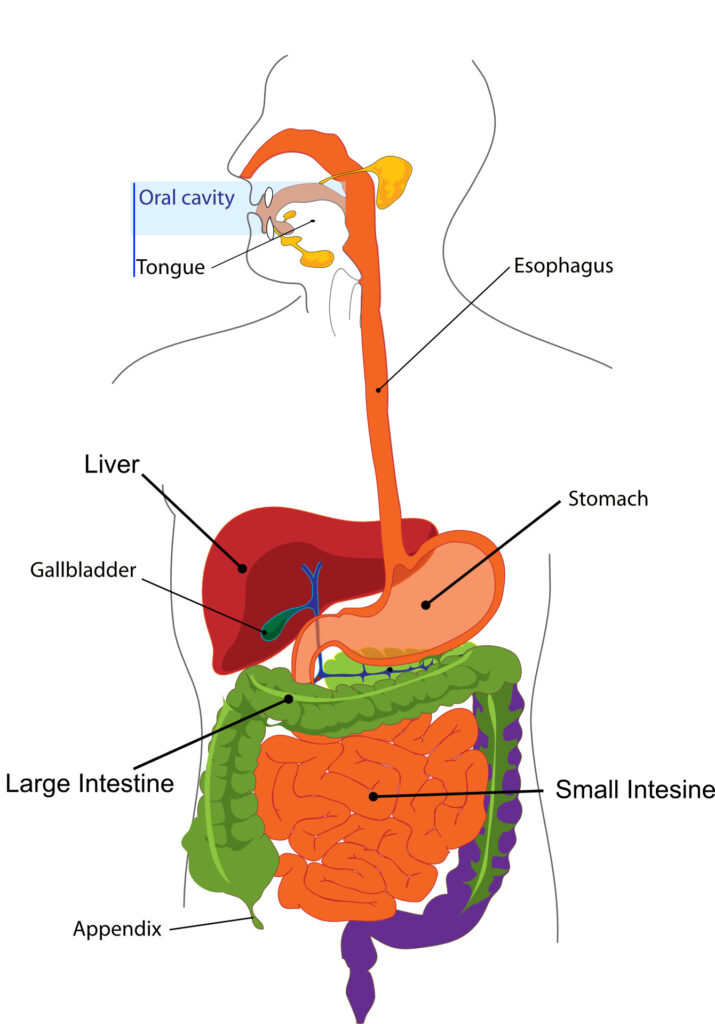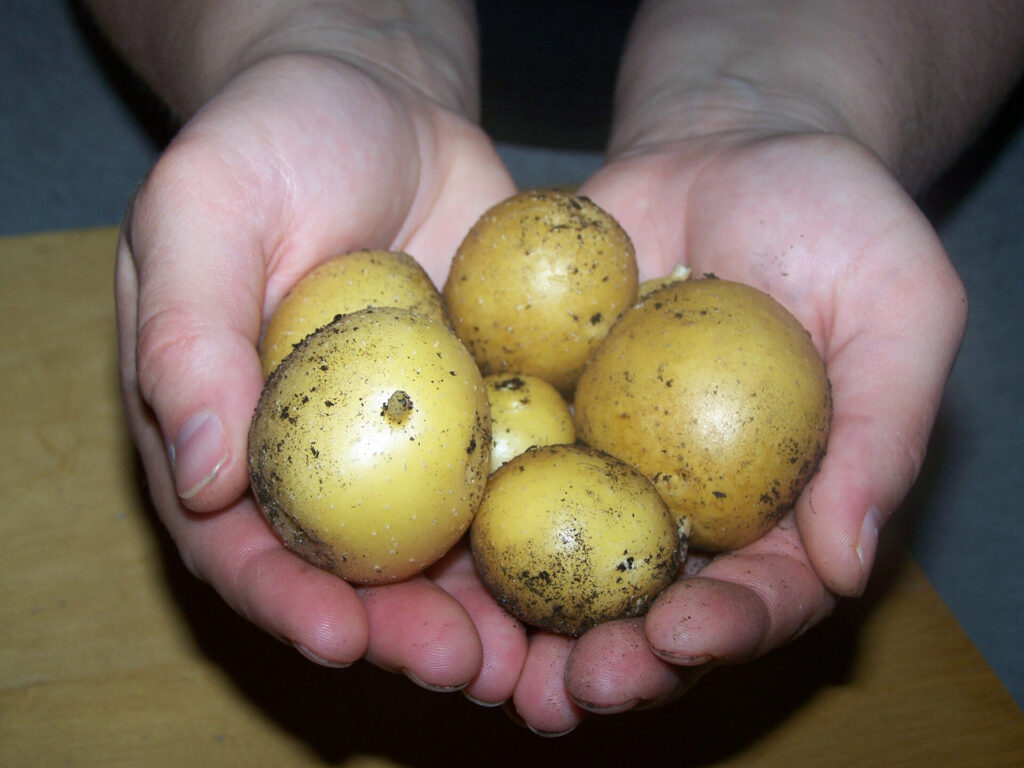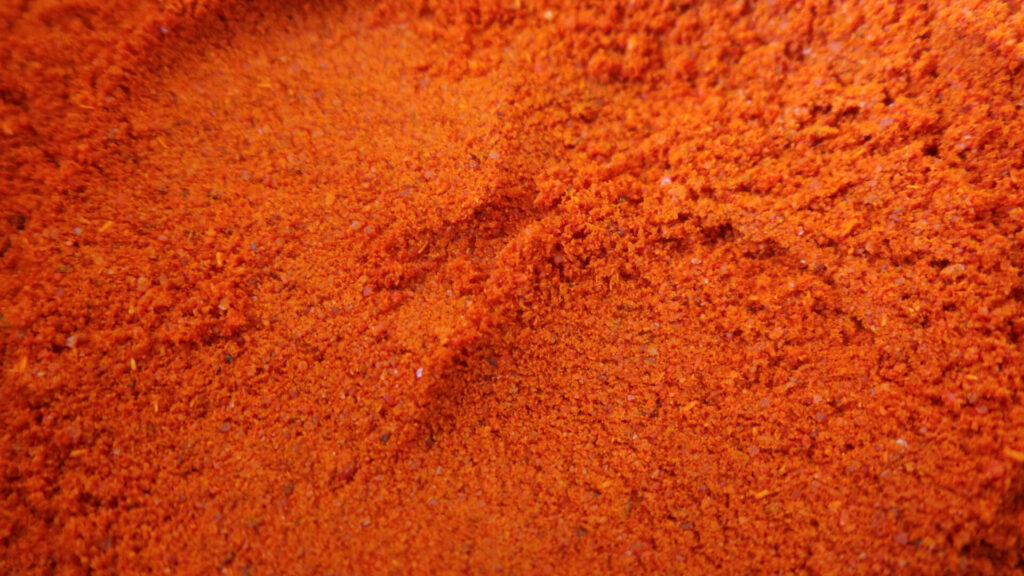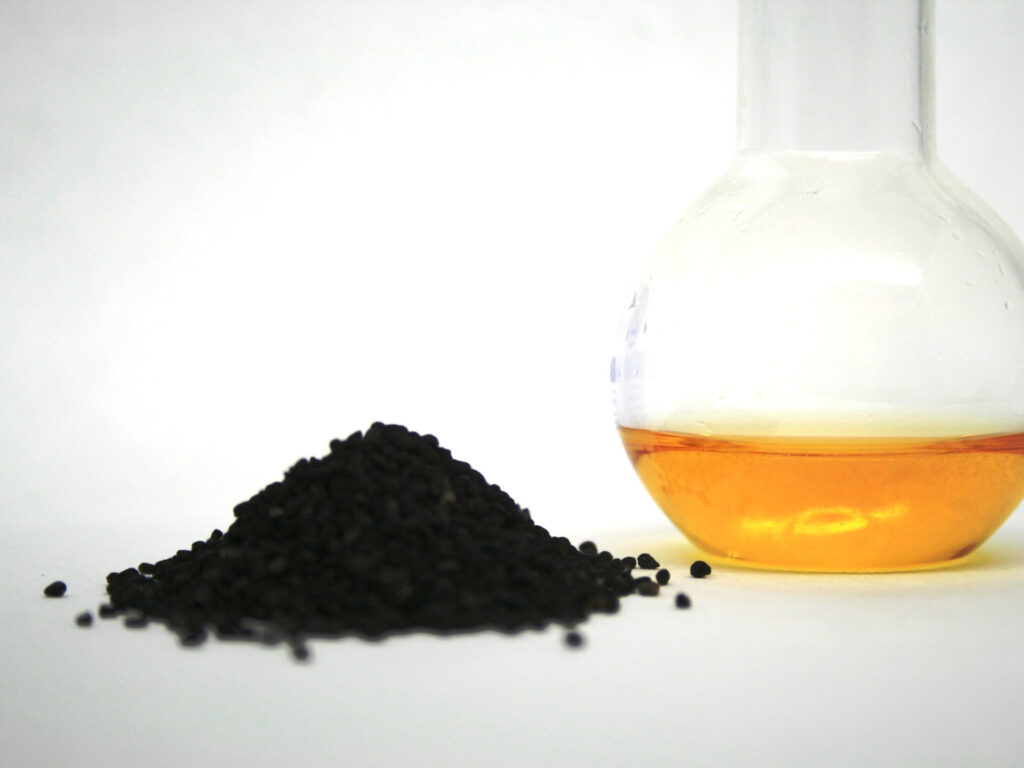So many people suffer from ulcers, and most think that the cause is stress or spicy food. It’s now known that ulcers are more often brought on by excess digestive acid and a common bacteria. Learn about 4 natural remedies for gastric and peptic stomach ulcers including “Vitamin U” . You’ll be surprised!
When discussing ulcers, we first want to get our definitions straight, as there are various types of ulcers.
Simply put, a gastric ulcer is a sore in the stomach lining. This sore can be located in the stomach, esophagus, duodenum (pronounced doo-o-dee-num) or the small intestine.
A peptic ulcer is a type of gastric ulcer in the duodenum, which is located at the beginning part of the small intestine.
Gastric ulcers are generally experienced as gnawing or “burning” pain – rather than a sharp severe pain – in the upper center of the stomach.
These ulcers result from damage to the digestive tract or stomach lining. In normal conditions, the stomach lining is protected by a thick layer of mucous that acts as a barrier between the stomach lining and acid that is produced by digestion.
It was believed for decades that ulcers (gastric, including peptic) were caused by stress or spicy food. It is now known that all gastric ulcers are caused by excess acid.
What Causes Excess Stomach Acid That Results In Ulcers?
Excess stomach acid that deteriorates the stomach lining could result in a tear or hole.
Repeated use of over-the-counter anti-inflammatory drugs or NSAID’s (such as aspirin, ibuprofen, naproxen) is one cause of stomach acid. Many years ago, it was casual street-talk to say that taking too many aspirins would cause a “hole in your stomach” and that meant…an ulcer.
Smoking cigarettes and drinking alcohol in excess, along with poor eating habits, can also contribute to the formation of stomach ulcers. Poor eating habits would would include regularly consuming colas, diet colas, large amounts of junk food, and fatty foods.
More recently, however, it has become understood that the main cause of stomach ulcers is a stomach bacteria, Helicobacter pylori or H. pylori.

Bacterial H. pylori is contagious, and it affects around 60% of the world’s population. It can be present in water or on/in food that is not cleaned before eating. It is most widely transmitted through saliva and feces.
It is believed that the spiral-shaped bacteria enters through the mouth and makes it’s way to the digestive tract, where it then resides. It protects itself by producing a compound known as urease, which keeps it from being destroyed by stomach acid. Meanwhile, it burrows in, chewing away at stomach tissue. The presence of H. pylori bacteria is a major contributing cause of excess stomach acid production.
Due to the contagious nature of H. pylori, it is important to be vigilant about drinking clean water and cleaning veggies and fruits. It’s also very important to be careful about our personal hygiene habits, such as washing hands before eating and after using the toilet. It can be transmitted via kissing or any contact with the mouth.
Although many people have the H. pylori bacteria present in their systems, it’s not clear why some people suffer resultant stomach problems and others don’t. Some have the bacteria over the lifetime and never suffer any symptoms. Others will experience ulcer symptoms.
Despite the fact that stress does not directly cause an ulcer, stress can play a part in breaking down our immune system defenses. A weakened immune system could be a factor in allowing H. pylori to take hold and thrive in the stomach. So, it’s important to reduce stress and boost our overall immunity as much as possible, using natural health practices and natural remedies.
Certain people may also have genetic propensities for recurring bouts of H. pylori, and the resultant ulcer symptoms throughout the life.

Some symptoms of stomach ulcers, indicating an H. pylori infection are:
- Dull gnawing or burning pain in the stomach
- Bloating
- Excessive burping
- Loss of Appetite
- Heartburn
- Unexplained weight loss
- Nausea and bloody vomit (rare)
- Dark stools (rare, resulting from blood in the stool)
Many people try medical drug treatments for ulcers or H. pylori. A treatment protocol generally includes one or two different antibiotics, an acid reducing drug, and/or histamine blockers. This protocol is taken over two weeks and repeated, if not successful. In fact, many people who try conventional treatment don’t get relief from their ulcer symptoms.
As antibiotics for treating ulcers are prescribed on a widespread basis, the H. pylori bacteria has become resistant to this type of treatment. That’s one reason why people often need more than one round of antibiotics, and even then, results are not always forthcoming.
People who try the natural treatments listed below for treating ulcer symptoms report quicker results (by half or more!) than those who attempt the antibiotic protocols.
So, here are the top 4 natural treatment suggestions for ulcers…
4 Natural Remedies For Stomach Ulcers
The first two remedies are so simple, you are going to be stunned! Two natural remedies that work very well to dispel ulcer symptoms are raw green cabbage juice and raw potato juice. Yes, you heard it right!
In many cases, they produce almost instant results. It is better to try using just cabbage juice or just potato juice, using organic potatoes or organic cabbage, whenever possible. You will be drinking this juice raw and for healing purposes, so you don’t want to add extra chemicals to your system…especially when you’re trying to heal it!!
1. Green Cabbage Juice

Cabbage contains powerful natural healing compounds and has been used for thousands of years to improve digestive health. The three phyto-nutrients (plant nutrients) contained in green cabbage that are most likely to help heal ulcers are gefarnate, S-methyl methionine, and sulfuraphane.
Gefarnate helps to heal the mucous membrane lining of the stomach and that, along with S-methyl methionine and sulfuraphane, can rid the stomach of H. pylori bacteria. Sulfuraphane is also used to treat autism and heal cancer.
Scientists are still not exactly clear exactly how cabbage juice heals the stomach; it’s one of those synergistic holistic-plant-magic things that is simply a miracle of nature. It’s the synergy of the entire plant that creates the healing actions.
So, even scientists unofficially refer to the healing components of cabbage juice as Vitamin U (for ulcer!) even though the compounds are not really vitamins and cannot be isolated as such.
What scientists do know, however, is that taking something as simple as cabbage juice is quite often more effective than modern drug protocol treatments.
You can use a juicer to make cabbage juice or use a blender. For using a blender, you simply cut a chunk of raw green cabbage, approximately 3” x 4” in size, slice it into smaller chunks and add it to a blender. Cover the cabbage by about one inch in water. Blend for a several minutes on high to totally break down the cabbage. Strain the cabbage juice into a cup and drink. It is best to drink the juice immediately after preparing, rather than letting it sit around or refrigerating.
The smell of raw cabbage is quite strong, but it tastes surprisingly mild and rather sweet. Of course, that depends on the particular cabbage.
You should aim for about 1-2 cups of raw juice per day, taken on an empty stomach. If you can, try to take it just upon rising, the first thing in the morning, before breakfast. That is ideal, but don’t worry if that can’t happen…anytime during the day (on an empty stomach) will provide results.
Note: If you don’t have any cabbage on hand, Brussels sprouts are quite similar in their components, so you can substitute them, if you have to…and if you don’t have a blender or juicer, even munching on fresh cabbage can be effective.
Raw cabbage juice has numerous other health benefits. It’s high in antioxidants and anti-inflammatory compounds that boost overall immunity and help prevent and treat kidney damage. Cabbage also helps the body create mucous, which is not only useful in healing ulcers, but aids in overall cellular protection. Cabbage also helps control the formation of fat cells, aiding in weight loss.
2. Potato Juice

Potatoes have also been known throughout the centuries as an incredibly healing vegetable, particularly for stomach problems. We’re talking about regular white (on the inside) potatoes of any variety. Raw potato juice is highly alkalizing and has emollient properties that soothe the stomach lining. Plus, bacteria does not become resistant to the anti-bacterial compounds in raw potatoes, so potatoes have a continued long history of successfully healing ulcers!
Peel a small potato and cut into cubes and place into a blender. It’s important that you don’t use potatoes with “green” flesh beneath the skin, because they contain a compound known as solanine, which is poisonous. It can cause other issues, such as headaches, nausea and respiratory problems, so do avoid green potatoes!
If your potatoes are organic, you can leave the skin on, once you have scrubbed the potato free from all dirt and removed any eyes. But only if your potatoes are organic!! If not, peel the potato before using.
Cover the potato chunks in about one inch of water. Blend for several minutes on high speed to totally decimate the potato. Strain the potato juice into a cup and drink down. You should aim for about 1-2 cups of raw juice per day. Potato juice does not taste fabulous, but it’s not awful and not as “strong” as cabbage juice. It tastes kind of earthy or “dirty” but is fairly mild-tasting overall.
There are so many other health benefits of raw potato juice, too. Potatoes are high in the compound quercetin, which is known to be useful in preventing cancer and tumors. Potatoes are also high in fiber which helps to prevent colon cancer. Raw potato juice cleanses the liver and gall bladder and reduces uric acid that causes gout.
The juice of a raw potato encourages the production of collagen, due to its high Vitamin C content.
3. Cayenne Pepper

This is another home remedy that you probably have in your kitchen – simple ground cayenne pepper.
Cayenne pepper, although it is often unfairly maligned for its spiciness, is not the cause of ulcers! Or any other ailments! In fact, cayenne pepper is excellent for health in many ways…so don’t be afraid of cayenne pepper.
The legendary Dr. Christopher (of Christopher’s Herbal Formulas fame) has promoted the cayenne pepper “cure” for ulcers for many years, with anecdotal references on his website.
It is now understood that one of the phytonutrients in cayenne, capsaicin, aids stomach acid regulation. This is key to curing stomach ulcers, now that we know that the H. pylori bacteria is responsible for increased stomach acid. Cayenne also encourages the production of saliva, which aids digestion.
For treating stomach ulcers, the suggested recipe is just 1 teaspoon of cayenne pepper in a cup of hot water…drink it down and repeat 2-3 times per day.
Aside from relieving ulcers, cayenne has many other fantastic health benefits. Cayenne is a vaso-dialator, increasing blood flow in arteries and blood vessels, which is effective for preventing blood clots, heart attacks and strokes.
Also important is cayenne’s effectiveness in diminishing migraine pain when used internally, and relieving joint and nerve pain, when applied topically.
You can find cayenne at almost any grocery, anywhere, but if you are using it for healing purposes and if you cook with it often, buying organic cayenne powder in bulk is most cost effective.
4. Manuka Honey and Black Seed Oil


This fascinating natural remedy for destroying H. pylori bacteria has two superfood wonder ingredients – Manuka honey and black seed oil (Nigella sativa).
Both of these ingredients are incredible on their own. Honey and honey’s healing properties have been known throughout the ages, especially for wound healing. Black seed oil also has many fantastic health benefits.
As stunning as they are on their own, it’s even more interesting that Manuka honey and black seed oil combined have a quantified, enhanced ability to destroy the H. pylori bacteria.
This is not surprising, because Manuka honey, which is derived from bees that forage exclusively on flowers of the uncultivated Manuka bush (Leptospermum scoparium) in New Zealand and Australia, has an unparelled anti-bacterial profile. Manuka honey contains Methylglyoxal, or MGO, a unique natural compound that allows the anti-bacterial and anti-viral constituents of natural honey to remain over time and to even grow stronger over time.
Black seed oil is renowned throughout the ages as a remedy for almost any ailment. It contains the powerful phyto-nutrient thymoquinone, which contributes to black seed oil’s strong anti-bacterial properties. Black seed oil, combined with Manuka honey, is a winner for eradicating stubborn H. pylori bacteria in the stomach.
Try this remedy if you have recurrent or persistent ulcer symptoms. The recipe is simple.
Take one teaspoon of Manuka honey along with one teaspoon of black seed oil, per day, for 1-2 weeks.
You’re going to take them at the same time, but if you purchase your Manuka honey and black seed oil separately, you can use them separately for other health reasons, once your ulcer is healed. Not to mention, Manuka honey tastes delicious, on its own!
Manuka honey is highly regulated, so be sure that you purchase from a trustworthy source. Remember, Manuka honey is more than just table honey…it is medicinal in nature, so it’s more expensive. Consider it a supplement or a natural medicine, and use it with that in mind.
Conclusion
Regardless of which remedy you try, you should see results very quickly – within 2-4 days. Some people even find initial lessening of symptoms almost immediately after drinking a cup of potato or cabbage juice.
Not all natural remedies work the same for every person, so try one and see how it goes…there is no one size fits all when it comes to health due to the myriad underlying and concurrent conditions one might have…so be patient.
Continue taking your preferred remedy for at least 1-2 weeks to one month and then stop. It’s unlikely, but if your symptoms have not disappeared, you can do another round. As mentioned before, there are only good effects to be gained from taking any of these remedies and you’ll probably experience other great positive benefits, too.
If, in the future, you begin to notice ulcer symptoms, you can use any of these remedies again, without concern.
Disclaimer: This post is for informational purposes only. Any material herein is the expressed opinion of the authors and is not a substitute for professional advice, diagnosis or treatment, nor has it been evaluated by any regulatory agency. All use of information herein is solely at the risk and discretion of the reader. Have a blog? This post is for sale. Contact us.